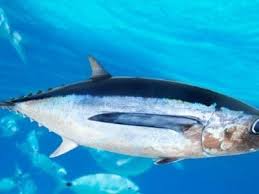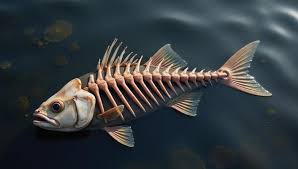Fishes vary not only in their habitat characteristics, such as water source and type, but also in their skeletal structure. Fish can be classified as temperate or tropical types, freshwater or saltwater types, or bony and cartilaginous types.
Each subgroup consists of a large and variable number of fish types and distinguishing characteristics. Fish are classified using various schemes. These bases of classification include:
Water Source
1. Tropical Fish
These are fish that live in either salt or freshwater but need a warm (tropical) medium or temperature to live. The types can be Tropical Freshwater Species or Tropical Marine Species.
2. Coldwater Fish
These fish can be salt or freshwater species that need colder water temperatures. Like tropical fish, coldwater fish can be Coldwater Freshwater Species or Coldwater Marine Species.
Read Also: Apple Maggot: Description, Damages Caused, Control and Preventive Measures
Type of Water Body

1. Freshwater Fish
These are fish that live in freshwater, usually found in inland rivers and streams of most continents. They can be as colorful as marine fish and yet need less care. Most freshwater fish in the ornamental hobby are tropical species, which require a heater. Freshwater fish can be further grouped based on temperament, lighting needs, habitat needs, and swimming level, as shown below:
Fish TypeTemperamentLighting NeedsHabitatSwimming LevelSize (cm)Shovelnose (catfish)PeacefulReducedPlants/rocksBottom2.8″Bristlenose (algal eater)PeacefulReducedPlants/rocksBottom2″Giant (crab)PeacefulBrightPlants/rocksAll4.75″ButterfishPeacefulReducedPlants/rocksTop4.75″PacuPeacefulBrightPlants/rocksMiddle20″Spotted PufferAggressiveBrightPlants/rocksAll6″
Freshwater fish can also be classified on the basis of shared characteristics as:
i. Killifishers and Livebearers: livebearers, killifishes, mosquito fishes, gambusia, pupfishes
ii. Darters and Sculpins: darters, sculpins, longperches
iii. Flatfishes, Sunfishes, and Perchlike Fishes: flounders, sunfish, perches, basses, crappies
–iv. Elongate Fishes with Long Snouts: paddlefish, sturgeons, pikes, pickerels, gars
v. Eel-like Fishes and Catfishes: lampreys, eels, bowfins, catfish, bullheads
vi. Minnows and Shiners: daces, shiners, long minnows, shads
Trouts and Salmons: whitefish, trouts, salmons, graylings
2. Marine Fish
These are fish that live in salty seawater. Most marine fish need a tropical climate. Saltwater types of fish are categorized as:
i. Shark-like Fishes: sharks, dogfishes, ratfishes
ii. Skates and Ray-like Fishes: rays, mantas, stingrays, skates
iii. Eel-like Fishes and Long Dorsal-finned Fishes: hagfishes, morays, wolffishes, eelpouts, midshipmen
iv. Drum-like Fishes, Cods, Trouts, and Catfishes: trouts, drums, sea catfishes, cods, cobias
v. Sticklebacks: sticklebacks
vi. Long, Slender Fishes: cutlass fishes, flying fishes, needlefishes, pipefishes, trumpetfishes
vii. Seahorses: seahorses
viii. Fishes with Spiny Rays or Tapering Bodies: rockfishes, scorpionfishes, lizardfishes, sculpins
ix. Bass-like Fishes, Grunts, and Snappers: temperate basses, seaperches, grunts, snappers
x. Angelfishes and Disc-like Fishes: angelfishes, opaleyes, spadefishes, surgeonfishes, butterflyfishes
xi. Parrotfishes and Wrasses: parrotfishes, wrasses
xii. Spindle-shaped Fishes and Large, Robust Fishes: jacks, whitefishes, tunas, bonefish, bonitos
xiii. Flatfishes: sanddabs, halibuts, flounders, soles
xiv. Puffers, Boxfishes, and Fishes with Lures: goosefishes, boxfishes, filefishes, puffers, lunpfish
Read Also: How to Farm and Care for Daggertooth Pike Conger Fish (Muraenesox cinereus)
Basis of Body Skeleton

1. Jawless Fish
These include the lampreys (Class Cephalaspidomorphi) and hagfish (Class Myxini/Hyperotreti).
i. Lampreys: A lamprey (lamprey eel; Family Petromyzontidae) is a jawless fish with a toothed, funnel-like sucking mouth. They are known for boring into the flesh of other fish to suck their blood.
Lampreys live mostly in coastal and fresh waters and are found in most temperate regions except Africa. They begin life as burrowing freshwater larvae (ammocoetes) and transform into adults after 5-7 years, exhibiting predatory/parasitic behavior.
ii. Hagfish: These are primitive marine vertebrates known for their unusual feeding habits and slime-producing capabilities. They are long (about 1/2 meter), vermiform, and can secrete large amounts of sticky slime. Hagfish feed on both living and dead fish by entering through the mouth, gills, or anus, feeding on the insides.
2. Cartilaginous Fish
This group includes fishes belonging to the Class Chondrichthyes. Cartilaginous fishes possess internal jaws, paired appendages, and a cartilage-based internal skeleton.
They are proficient predators and exhibit features such as placoid scales, oil-filled livers for buoyancy, and internal fertilization in males (using claspers). The subclasses include Elasmobranchii (rays, skates, sharks) and Holocephali (chimaeras or ratfishes).
3. Bony Fish
Belonging to the Class Osteichthyes, bony fishes are cold-blooded vertebrates with a skeleton made of bone. They make up the largest class of vertebrates, with around 96% of all fish species. The subclasses include:
i. Subclass Dipnoi (Lungfishes): Characterized by fused teeth and the presence of an air-breathing organ that opens to the esophagus.
ii. Subclass Crossopterygii (Coelacanths): These fishes have cosmoid scales, two dorsal fins, and fleshy paired fins.
iii. Subclass Actinopterygii: This group includes all other living bony fishes, distinguished by rayed fins.
At the end of this article, it is evident that fish vary widely in their type based on water source, water body type, and body skeleton structure.
Do you have any questions, suggestions, or contributions? If so, please feel free to use the comment box below to share your thoughts. We also encourage you to kindly share this information with others who might benefit from it. Since we can’t reach everyone at once, we truly appreciate your help in spreading the word. Thank you so much for your support and for sharing!
Frequently Asked Questions
We will update this section soon.

